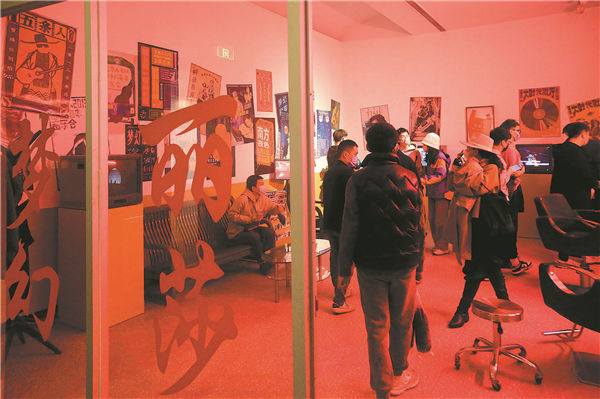

From the established director Jia's video Platform, which tells of the dramatic changes and reforms that happened between 1979 and 1989, to the well-known poet Xi's poem Sense of Reality or excerpts from his recently released work Take This, and to folk band Wutiaoren, the show aims to "close the distance between art and daily life", according to Wang, the director.
"Although they're not regarded as contemporary artists, we can't say that their works are not art. Art is diversified and can be close to everyone," Wang explains.
These star "artists" help to attract young people to pour into the museum, leading to those long lines at weekends. Many visitors say they saw photos of the works by these celebrities on online social platforms and decided to visit the museum.
Zhang Kaixing, a 21-year-old who works at a factory, says that after he saw a photo of Wutiaoren's Dreamy Lisa Salon, he made his first visit to the art museum.
"I never knew what contemporary art was before. It offers me an interesting experience of art," says the young man, who has queued about 20 minutes to enter the museum with his friends, all of whom are first-time visitors to an art museum.
Apart from those celebrities' works, Zhang is also intrigued by artists who combine local elements into their art pieces.
For instance, Cao Fei's video Cosplayers concentrates on a group of young people dressed up as anime or game characters, roaming around streets in Guangzhou, chasing or even fighting with each other. Xu Bing's The Seven-Character Poetry Collection of Small Enterprises collects tens of thousands of clothing brand labels produced in Guangzhou and uses a computer program to create a seven-character poem.
Guangzhou is a port city and has lots of factories to produce daily goods sold across the world, which results in artists' reflection of the local culture, says curator Wang.